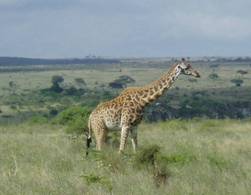 We are sorry to say that Mac is not very well, but he is still e-mailing strong and recently sent the Beetle a collection of Mac reminiscences about some of his travels around India in 1992.
We are sorry to say that Mac is not very well, but he is still e-mailing strong and recently sent the Beetle a collection of Mac reminiscences about some of his travels around India in 1992.
One of the joys of travelling for me by rail in India second class air conditioned was that I met so many fellow Indian travellers. There is something about long train rides that people tell you stories they perhaps would not if they thought they would see you again. ï¿Â½The High Sheriff of Calcutta told me of some of his dealings with Nehru. ï¿Â½When Nehru would bring VIPs to Calcutta it was part of the High Sheriffs job to kind of be a tour guide. ï¿Â½He told me that Nehru was a woman chaser and made some amazing conquests. ï¿Â½I don’t know if this is true or the High Sheriff was trying to impress me. One story he told was of a world famous violinist and his wife that Nehru was showing around the horticulture gardens or park. He told the wife that he wanted to show her something and took her with him away from the High Sheriff and the husband. The High Sheriff told me he was furious with Nehru for leaving him to distract the husband. Have you seen this plant Sir etc.
According to him Nehru did a lot for the country but also a lot for Indian women. Maybe he was imitating our President Kennedy and maybe this was all gossip.
Some of the Indians liked to gossip. ï¿Â½Another Indian told me that Nehru and Mountbatten’s wife had something going. More gossip?ï¿Â½ The lady architect that I met when I asked her if she had trouble getting architectural work as a lady architect told me that most of the architectural jobs she got was from family friends.
The Indian Army officer I met on train who later showed me around Agra was a Sikh. There are many Sikhs in the Indian Army. While Sikhs in the Indian Army can wear their turbans, beards etc this Sikh for some reason did not. I don’t know why he was the exception. He told me that those in the Indian Army get more leave than we do. He said this was because some had to travel great distances to get back to their home.
I seemed to be always meeting Indian Military on the trains.ï¿Â½ One asked me what unit I had been in in WWII. ï¿Â½I told him that he probably would not have heard of it as we did not get much publicity and disbanded after the War. So when I did tell him he laughed and said: “Oh in training we studied your mistakes!” I did not know that we were that well known or that we made mistakes. Ha!
One of the reasons I preferred 2nd class air-conditioned to First Class was that I felt it was safer. In First Class, the conductors seemed to disappear and in one case religious pilgrims came aboard without tickets and took over the compartments. It was their country, and I was not going to argue with them. In 2nd Class air conditioned the fellow travellers seemed to kind of look after me. ï¿Â½Kind of adopted me. ï¿Â½And I heard some fascinating stories. ï¿Â½Whether they were true of not, I don’t know, but it made the time go faster.ï¿Â½ I at first did not know that you were suppose to order your meals ahead of time and somewhere down the line at a future train stop they were brought aboard. ï¿Â½I always ordered vegetarian meals as I did not trust the meat. When some Indian travellers found out that I did not know the ropes on this so several ordered for me not letting me know and they did not know others had also ordered so at the next stop coolies came with several trays of meals for me. Ha!
They had a ring on the floor and the Indians carried small chains and padlocks that they attached their luggage to these rings when they were asleep. I was constantly learning from them. I actually got letters from some I met on the train that I received later in the States and one Army Indian Colonel later came to the Pentagon and phoned out here but I did not get the message until it was too late. He was a Lawler and a Sikh and he had made me an honorary Sikh.
If you would like to contact Mac, he is happy to answer e-mails: macsan400@yahoo.com


